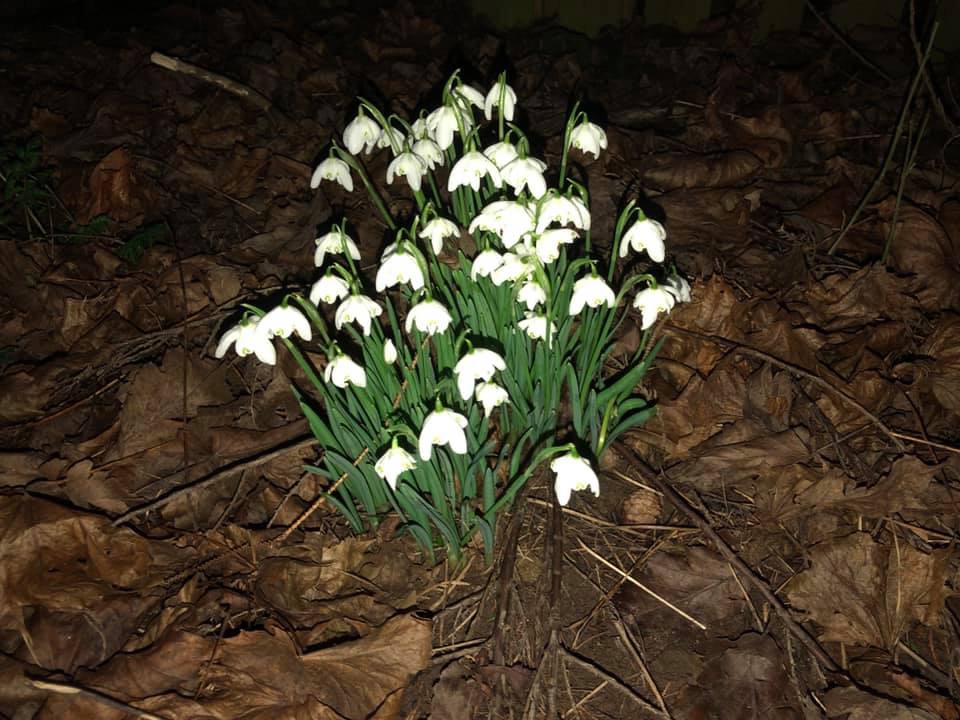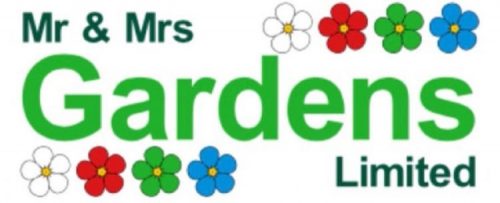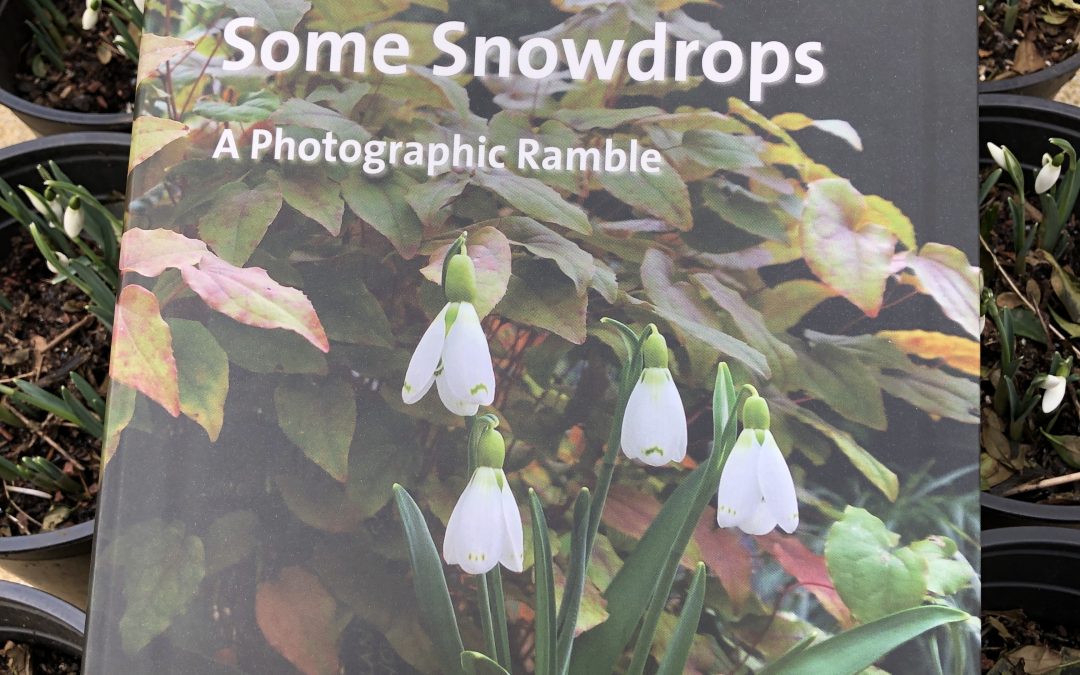The photographs on this blog are of some Snowdrops growing in our garden, or nearby. The photos were taken by us and are owned by Mr & Mrs Gardens Limited. They are not photographs from the book.
I was looking for some books to increase my knowledge and understanding of Snowdrops. This book, Some Snowdrops by Anne Repnow, was recommended to me by the Scottish Rock Garden Club (SRGC) as a good start. I purchased the book on the Alpine Garden Society (AGS) website. I am a new member of the SRGC and the AGS.
Firstly, what stands right out from the first flick through this book is the stunning photography – it’s mesmerising. Snowdrops are such a beautiful flower, and they have perfect timing to lift the spirits of gardens and gardeners at the start of every year (1).
I often find it difficult to take a nice photograph of Snowdrops. I only use the camera on my phone, and I don’t really know how to use it other than point and click. Sometimes by chance I get it right and the flower is captured well, but more often than not I can’t quite get the white of the flower to look as good as it should. I sometimes end up with just a glowing blob of white on the end of a green stem. Perhaps that’s why when I see a stunning photograph of a snowdrop I get a little transfixed. It’s the beauty of the flower mixed with the knowledge that it’s not as easy as it looks to photograph white flowers.
I see lots of photos of snowdrops in immaculate terracota pots with black or coloured card backgrounds with lighting set ups to show off the flower at its best. They do indeed look amazing photographed that way. It may be to show off a particular snowdrop in a prized collection setting, or in a ‘for sale’ setting in order to illustrate the plant’s many endearing features. From what I can see, there are only 2 photos of this type in this book. The rest of the snowdrop photos in the book are actually almost all photographed growing in the author’s garden in Germany, where they are growing and spreading naturally. This, for me, makes these photos even more special. There are 90 different snowdrop varieties featured in the book, each with its own dedicated full page, together with 3 close up photographs of each snowdrop (2). The cover and pages of the book are made of a premium paper, with a glossy look and feel, which really adds to the overall quality of the photographs of the flowers. This book really is a joy to look at and own.
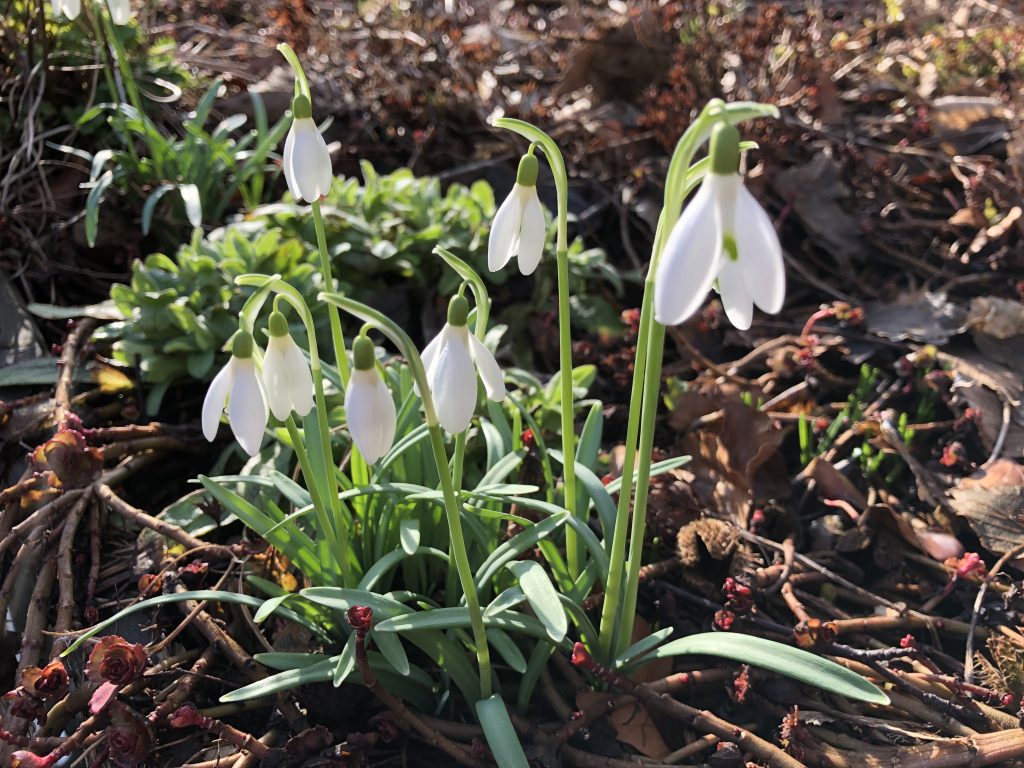
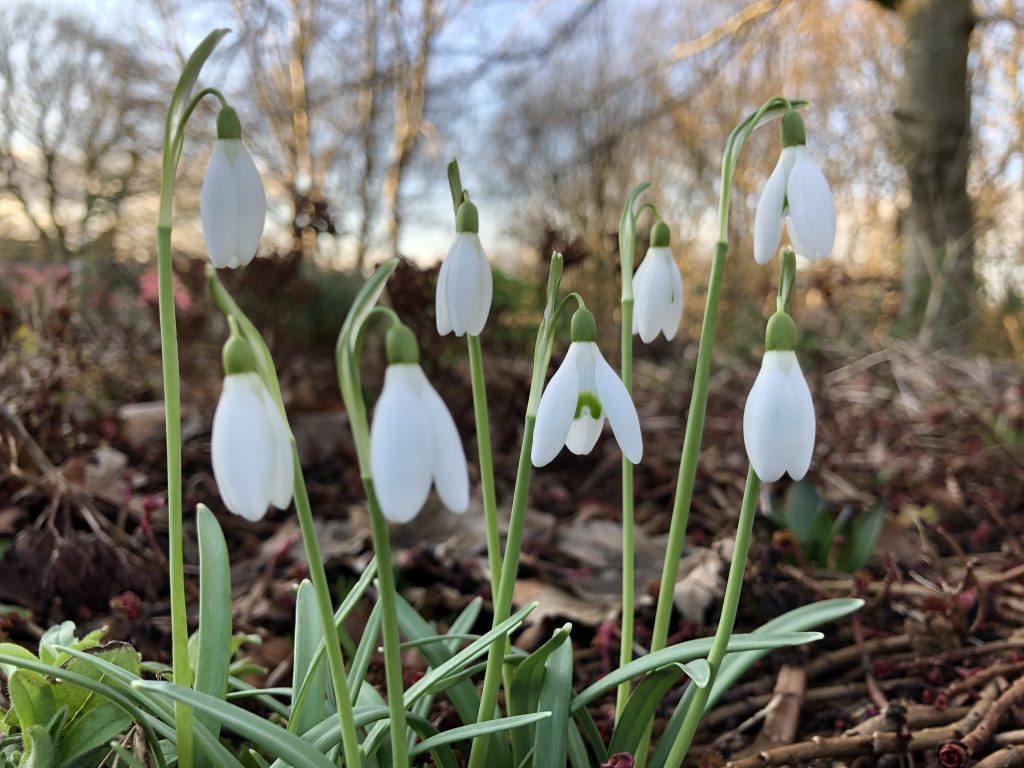
There is not much by the way of lengthy text within the book. It’s not a long read. It is an easy read aimed at the beginner. I finished it in one evening. It’s not really meant to be read like a textbook. It’s a book to savour, to revisit many times, and to admire.
There is a forward from Matt Bishop (author and Galanthophile), two very handy contents pages, a one page introduction, and a double page of acknowledgements set off with a lovely photo of an ancient oak tree next to a lake surrounded by snowdrops. You then dive straight into a wonderful journey through 90 exquisite pages of snowdrops in alphabetical order from ‘Ailwyn’ and ‘Angelina’ to ‘Yashmak’ and ‘Yellow Angel’.
Each snowdrop featured in the book includes brief but interesting details about the plant and its features. There is also a small chart on each page illustrating the price bracket (3), the flowering period, and the vigour of each plant. There were many snowdrops I could almost instantly fall in love with in this book, but if the chart on the page indicated it was pricey and not particularly vigorous, I decided I would let that snowdrop be the one loved by someone more wealthy and less patient than myself.
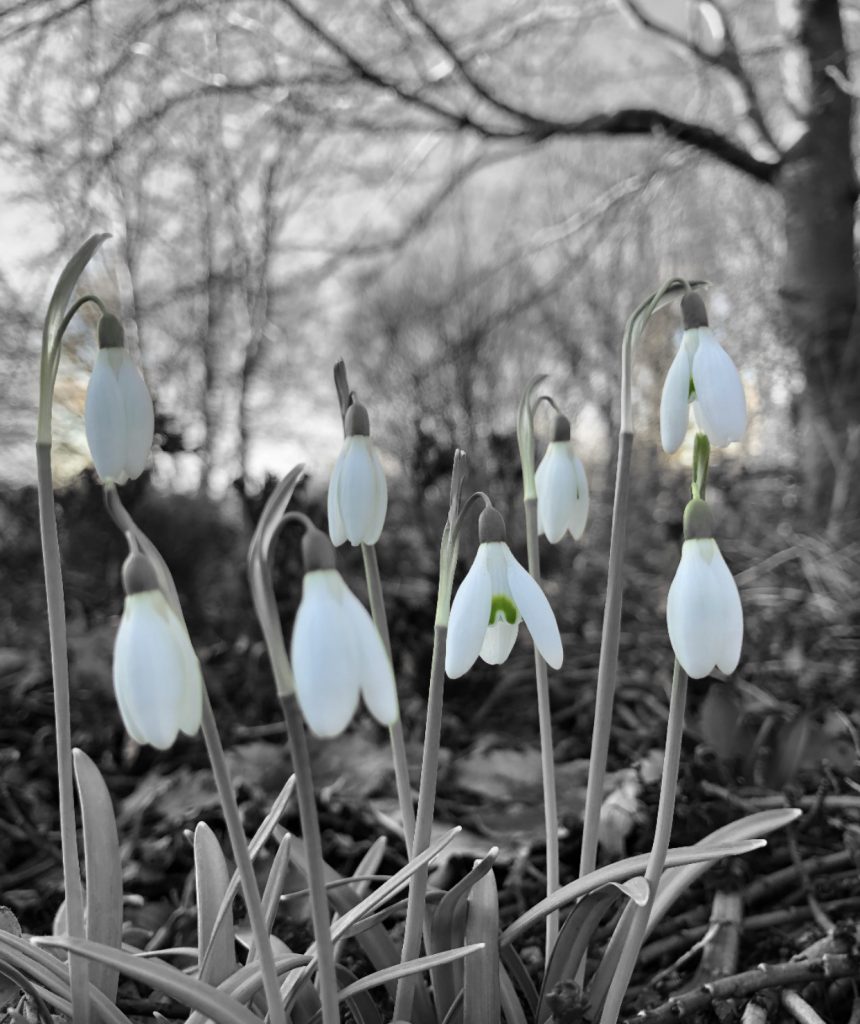
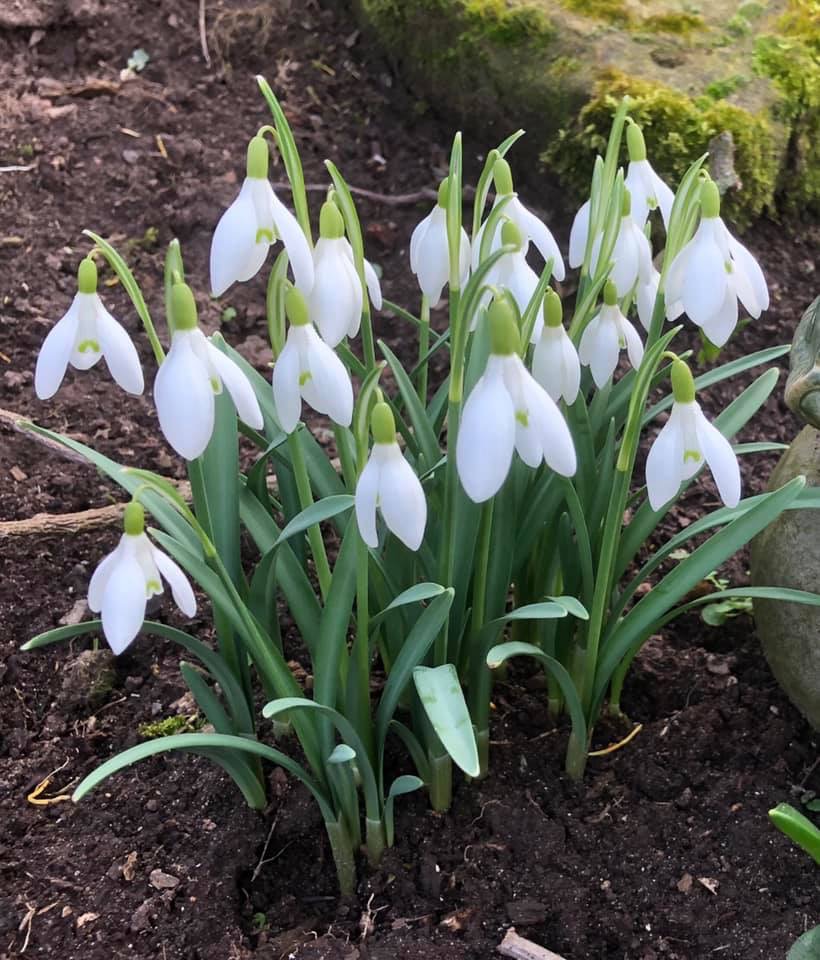
I do have some favourite snowdrops in the book that I’d love to own in the future. ‘Herzilein’ captured my heart, as it has an almost perfectly shaped heart on its inner segments, and the German word Herzilein translates to English as sweetheart. I lived in Germany as a child, and later for a short time as an adult. I think a little bit of my heart is still there, and I’d love to go back and visit again. ‘Diggory’ is another variety I’d like to own. It’s a popular snowdrop with large ballon shaped outer segments. ‘Ailwyn’ makes me smile as it looks like a dog. It’s a double flowering variety and has two dots on the inner segments that look like eyes, the downturned mouth of the apical V, and the floppy ears of the outer segments. I also like the dark green inner segments of ‘Cicely Hall’, the X of ‘Lapwing’, the scissors of ‘Three Ships’, and the green markings on the outer segments of “Sprite’ and ‘Viradipice’. If I allowed myself to go wild I’d love to grow ‘E.A. Bowles’. It’s tall with a large pure white flower, and was found by Michael Myers (aka @Snowdropman). It’s still a bit pricy for a beginner like me, but I’ll get one one day. If I allow myself to dream I could dream I owned and successfully grew ‘Ronald Mackenzie’, which has a yellow / golden ovary and inner segments. I don’t allow myself to dream of this variety too much as it’s still far too expensive for me, and if the plant didn’t survive in my garden, my dream would quickly turn into a sad nightmare. I could easily add to my ever increasing wish list of snowdrop varieties, but allowing myself to do so would mean my list would probably never end. I guess all gardeners have to show some restraint at some point.
You will notice how easily it is to fall in love with the many different snowdrop varieties when you see the photographs and read the descriptions the author has included in this gorgeous book. Many of us begin our snowdrop romance with the common snowdrop ‘Galanthus Nivalis’. Nivalis is very likely the snowdrop beginners like myself fell in love with and still love. I haven’t stopped loving it, I haven’t. It’s just that I now can’t help wanting to invite many more snowdrop varieties into my winter garden party. If you are a snowdrop beginner like me, and you buy and read this book, you may well quite happily begin to feel the same. This is a great book to begin a snowdrop journey (4).
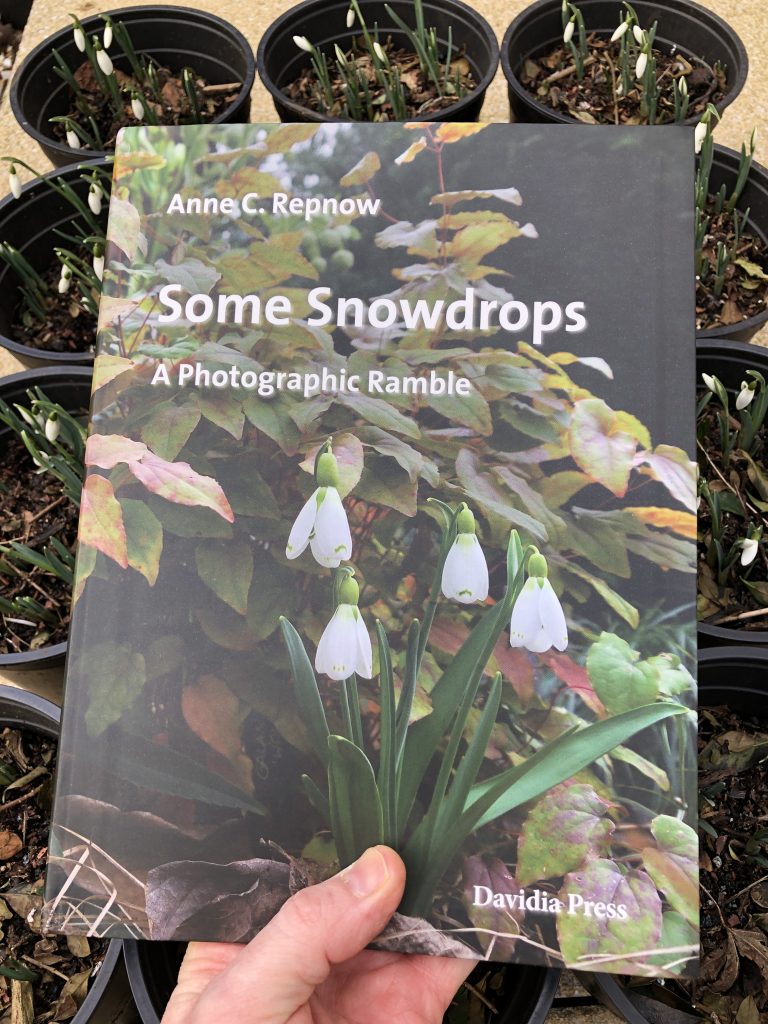
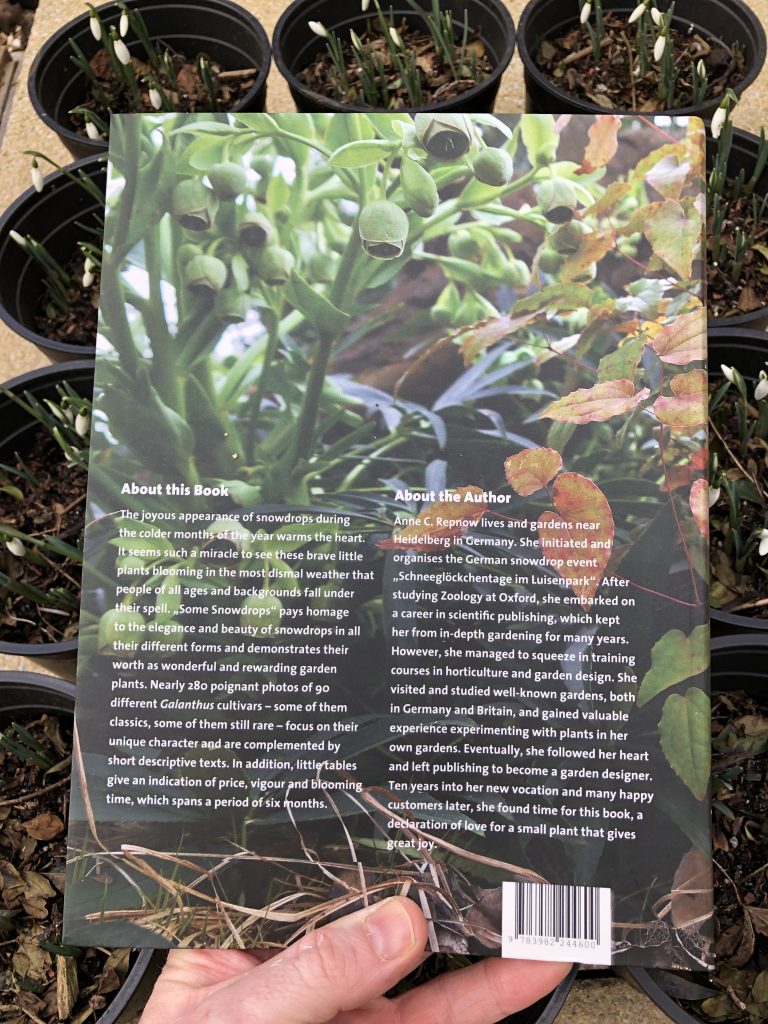
(1) Most snowdrop varieties appear and flower in gardens in the UK in January and February. However there are early varieties that flower in Autumn, and late varieties that flower in March and even into April. Much also depends on the weather, the location and the situation they are in.
(2) Every page has 3 photographs of each snowdrop apart from ‘Golden Chalice’ on p.45 which only has 2 photos, one of which has a black coloured background. The only other snowdrop that is photographed with a coloured background on 1 of the 3 photos appears to be ‘Flocon de Neige’ on p.39. Every other snowdrop featured in the book has 3 photographs all of which are of the flower growing in a garden setting.
(3) The author points out that price brackets can change as time and availability moves on. Often if a particular rare and expensive snowdrop is easier to propagate and is easier to grow then the price reduces as it becomes more readily available.
(4) The book features 90 varieties of snowdrop growing in the author’s garden. There are 20 known species of snowdrops, and currently over 2,500 named varieties.
“I am so pleased this book was recommended to me. I absolutely love it. It feels like the perfect way to begin my journey of learning more about Snowdrops. I will treasure it and refer back to it many times. It’s an absolute delight, and I would have no hesitation recommending it to anyone like myself who is beginning to explore the enchanting world of Snowdrops.”
